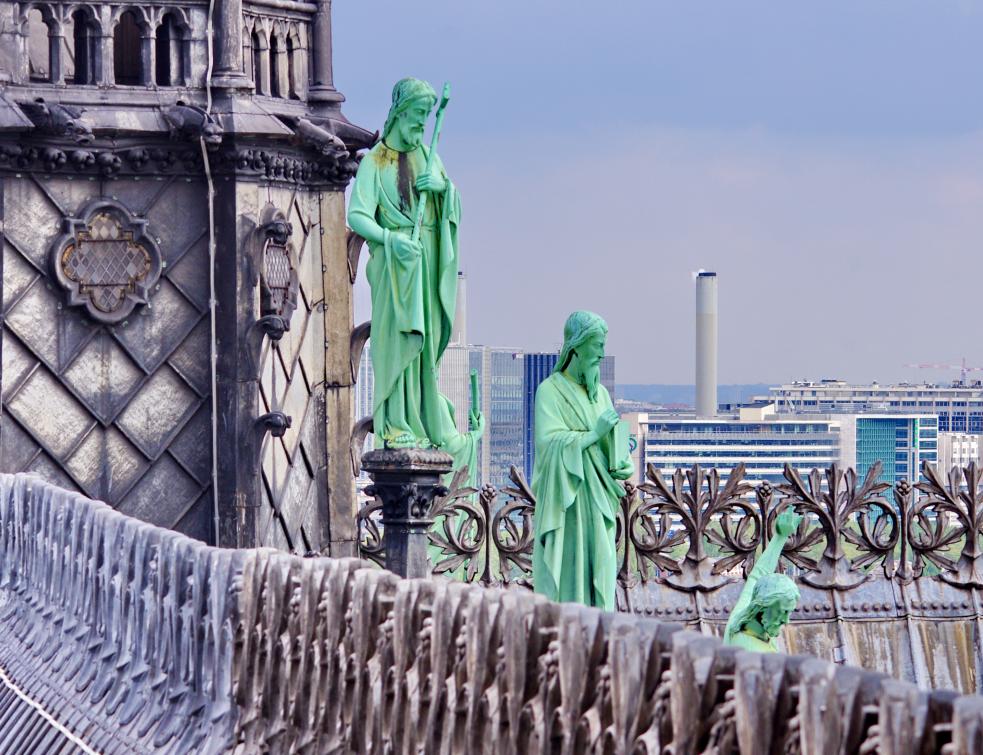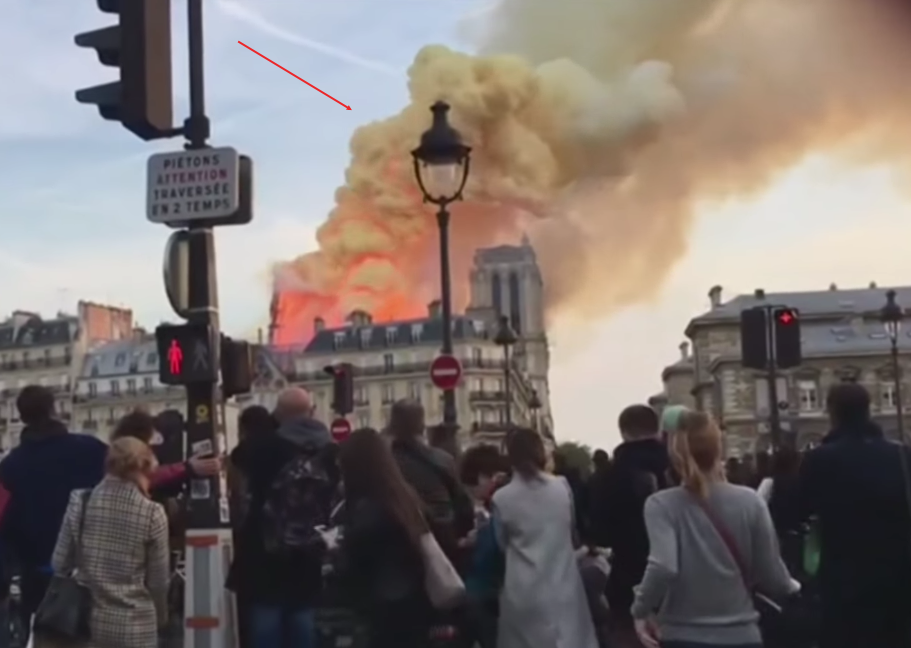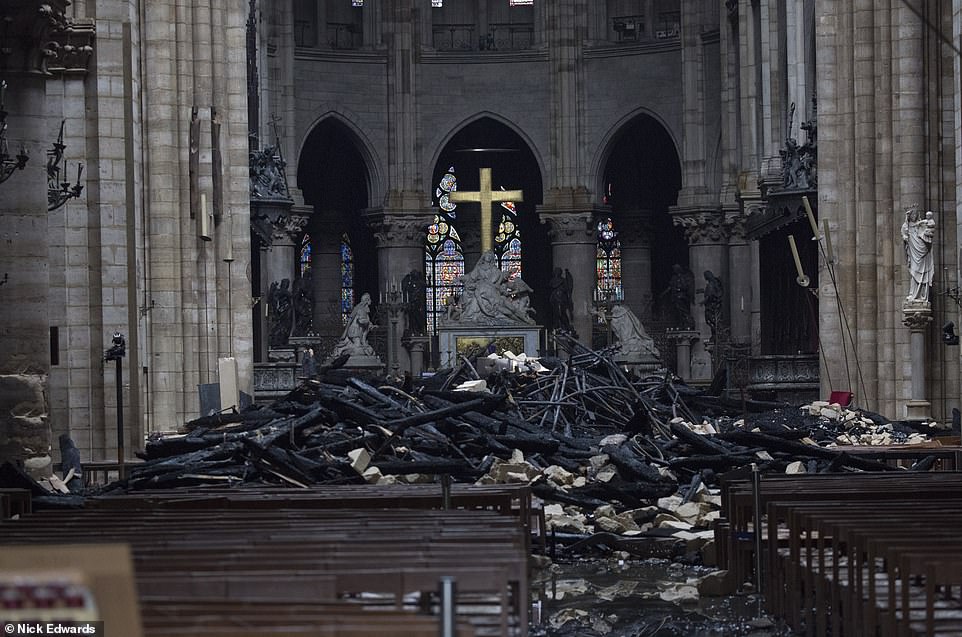500 tons of scaffolding
The first phase of work focused on the restoration of the boom, whose lead cover was no longer watertight. To this end, Europe Echafaudage, a subsidiary of Le Bras Frères, a carpenter specialising in the restoration of churches and cathedrals, whose headquarters are in Jarny en Meurthe-et-Moselle, began building a colossal scaffolding in April 2018 to work on the entire height of the boom, which reaches 96 m. [So, proper renovations hadn't even started yet, eh?]
This scaffold, which partially survived the blaze, weighed 500 tons and consisted of 500,000 pieces. It did not rest on the stones. A construction site elevator on each side of the cathedral provided access to the base of the boom.
On Thursday, April 11, the 16 copper statues placed at the foot of the arrow had been carved to be restored in the workshop. This first phase, costing 11 million Euros, was to continue for 4 years, until 2022, with the restoration of the 250 tonnes of lead in the boom cover. The entire renovation was to last ten years and cost about 60 million euros.
View of the base of the spire that was to be restored and collapsed 3 hours after the start of the cathedral fire ©P.P.P
No electricity in the attic
The Cathedral's frame, made of oak wood, consisted of several parts. The oldest, above the Choir, dates from 1220. In the nave, the structure dates from 1220 to 1240. Its dimensions are exceptional: 100 x 13 m in the nave, 40 m wide in the transept, with a height of 10 m. The structure of the boom was made of 500 tons of wood.
All this wood, several hundred years old, was very dry. To avoid any risk of fire starting, electricity was never installed in the attic under the arrow of the cathedral. Yesterday, only Le Bras Frères was present on the site during the day. It is far too early and this construction site was far too complex to risk a scenario of fire departure.
But, for the purposes of the work, the elevators and their drive were powered by electricity. To power the portable tools, an electrical installation had probably been installed in the scaffolding. The fire brigade indicated the day after the fire that the fire had started from the scaffolding: the electrical defect is plausible. [Was it installed, or "probably", i.e. mere speculation? It sounds like they are making stuff up.]





